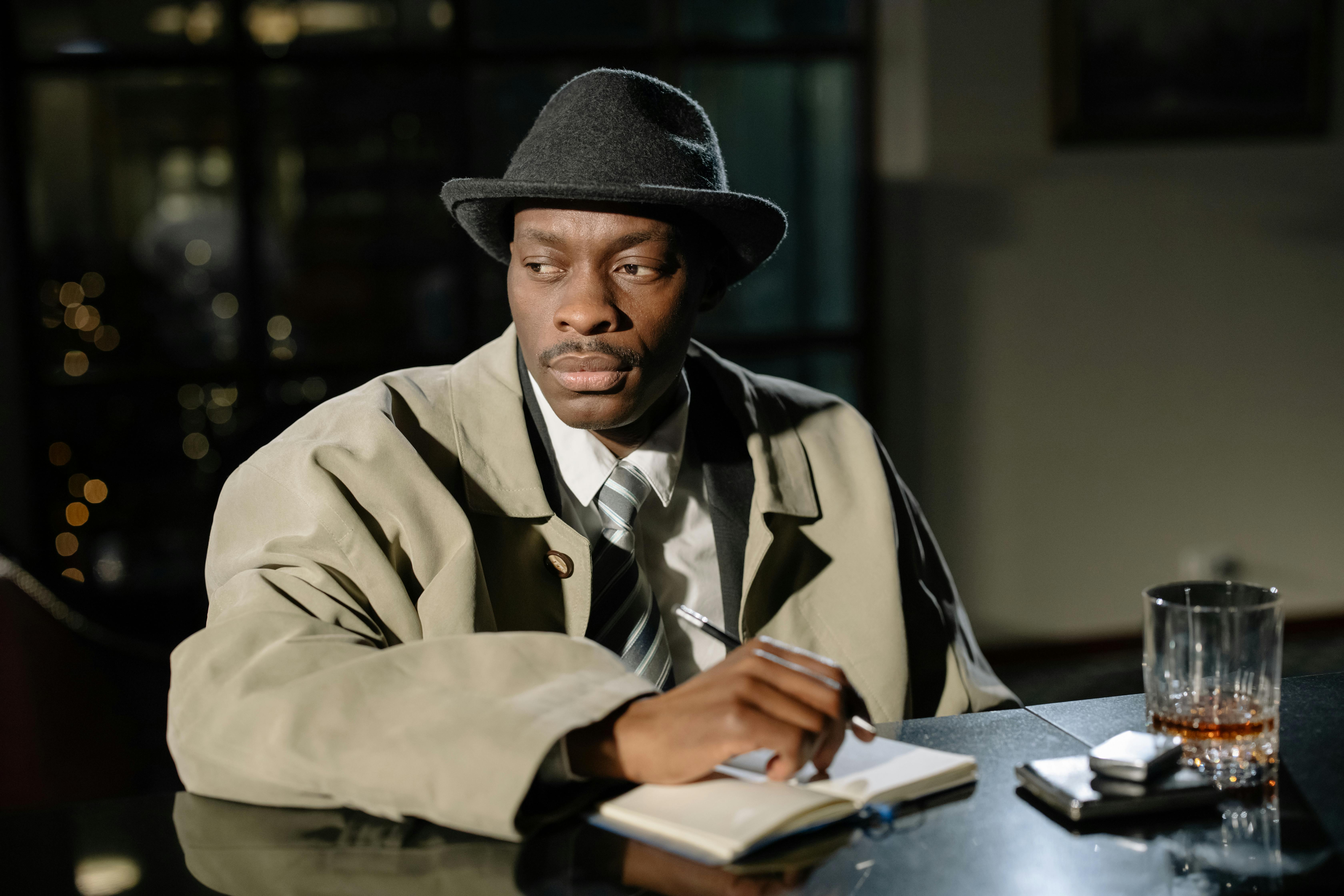What Is Plot vs Story? Understand Their Key Differences
by WriteSeen
Plot vs story is a fundamental distinction every creator should grasp. Plot refers to the sequence of events that create the narrative's structure, while story explores the overarching themes and emotional journeys within these events.
Understanding these differences sharpens your narrative skills, making collaboration smoother and storytelling more profound. This article unpacks how these elements work together to enhance your creative endeavors. Read on for insights into plotting, storytelling, and making your work resonate deeply with audiences.
Understanding Plot
Diving into plot sets the stage for your narrative. It's the blueprint—organizing events in a way that makes every story compelling and digestible. A well-structured plot drives your audience from point A to point B, never letting their interest wane. Think of plot as the backbone. Without a strong one, your narrative may struggle to stand straight.
Every plot has a foundation. At its core, it's the "what" and "when". The sequence of events, the timing, and how every twist adds up. Remember, a plot isn't just about things that happen. It's about how and why they happen. A sharp focus on cause and effect keeps your narrative dynamic. Use a three-act structure—setup, confrontation, resolution—to frame your plot just like storytellers in "Macbeth" or "The Godfather" have done.
A plot isn't static; it's an evolving map. Pay attention to conflict—it’s what makes your plot breathe. This conflict fuels your narrative, giving rise to climactic moments and ultimate resolution. Plot points are your checkpoints, ensuring you lead your audience somewhere with purpose and flair. What does this mean for creators like you? Mastering plot can transform a series of events into a captivating journey.
A well-crafted plot seizes the reader's attention, guiding them smoothly through your narrative.
Defining Story
Now, let's shift gears. While plot structures the events, story defines meaning. Your story touches on motivations, emotions, themes—the soul of your narrative. When you create a story, you address the why and how, adding depth to the events your plot lays out.
A story resonates on an emotional level. It drives home universal themes, making your work meaningful and memorable. As a creator, marrying events with emotions connects you with your audience. They won't just understand your narrative; they'll feel it.
Characters are your story's heart. Their journeys reflect complexities and dilemmas, showing growth or struggle. Tackle important questions like: What drives them? How do they evolve? Themes of love, loss, redemption—they're not just words. They become lessons your audience carries away. Ultimately, story transforms plot into a captivating narrative tapestry.
Plot vs. Story: Key Differences
Let's break it down. Even though plot and story intertwine, they're not synonyms. Knowing their differences contributes significantly to a powerful, engaging narrative. You can't have one overshadow the other without something missing from your creation.
- Plot focuses on structure: It's your sequence of events, the map that keeps everything in order. It's about what happens and when—informs the pace and rhythm.
- Story emphasizes meaning: It adds the emotional and thematic layer—what your work leaves with the audience. Story is why they care about the plot.
- Combine both for rich narratives: While plot guides, story deepens. Together, they create memorable journeys.
These distinctions are not just academic. Understanding them allows you to wield them consciously, crafting narratives that resonate and captivate. When you integrate them correctly, you're more than a storyteller—you're an experience creator, shaping narratives that stick with your audience long after the last line.
Every creative work on WriteSeen has the potential to master this balance. The right plot combined with a captivating story not only attracts attention but keeps readers or viewers coming back for more.
The Importance of Plot in Writing
Plot is your narrative's skeleton, essential for hooking and maintaining your audience's interest. It dictates the flow and keeps your reader engaged from start to finish. Without a clear, structured plot, even the most exciting ideas might falter. The key is constructing a plot that captivates, pulling your audience deep into your narrative.
A strong plot keeps the story alive. It guides your reader through twists, turns, and moments of tension. A well-structured plot isn't just about what happens; it's about when it happens, and how it fits into the greater narrative journey. Techniques like outlining your plot can provide an invaluable roadmap, ensuring your story's progression feels deliberate and satisfying.
Here are practical insights into effective plotting:
- Outline your plot: Sketching out key events and turning points helps visualize where your narrative naturally leads. This also assists in identifying any potential weak spots.
- Identify your plot points: These are pivotal moments that change the course or the mood of your story. Each should be impactful and necessary.
- Balance pacing: Keep a mix of fast and slow moments. Fast-paced scenes grab attention. Slower ones offer depth and reflection.
A carefully plotted narrative holds the reader’s attention by presenting a coherent and immersive journey.
The Influence of Story in Creative Works
While plot carries your reader through the narrative, story resonates with them on a deeper level. It adds meaning, turning events into emotions, and actions into development. This connection is the reason people remember some stories for a lifetime.
The magic of story happens as we weave themes and character arcs into the fabric of our plots. These motivate and evoke reactions, drawing your audience into your crafted universe. But how do you ensure your story hits home?
- Develop robust characters: Characters are your conduit to the story. Their growth, struggles, and triumphs mirror your themes and engage the reader viscerally.
- Embrace universal themes: Themes like love, loss, and identity are universal. They resonate deeply and create lasting impact.
- Embed emotional beats: Peel back the narrative layers to expose the feelings your story intends to evoke.
Your story's influence lies in its ability to inspire empathy, challenging what the reader might believe about themselves or their world. It's a powerful tool that connects creators with their audiences, fostering understanding and reflection.
Integrating Plot and Story in Creative Collaborations
Creative collaborations thrive when plot and story are seamlessly integrated. The fusion enriches your work, providing a balanced and compelling narrative. Collaborations offer the chance to combine unique perspectives, ensuring every element of your story is considered and polished.
When we work collectively, tools like those at WriteSeen help plot and story work in harmony, enhancing each project's depth and coherence. Platforms facilitate this fusion by providing secure and collaborative environments for creativity to flourish.
Here’s how to maximize collaboration:
- Blend complementary skills: Let plot-focused individuals structure your events while story-driven creators add emotional layers.
- Maintain open dialogue: Regular communication ensures plot and story remain aligned, allowing for seamless adjustments and consistency.
- Utilize tools wisely: WriteSeen’s platform offers timestamped project storage and feedback mechanisms, ensuring every narrative component is explored and refined.
Successful collaborations strike a balance between structure and emotional depth, resulting in narratives that aren't just seen, but felt.
Conclusion
Plot vs story is more than a stylistic debate—it’s the foundation of powerful storytelling. Plot gives your narrative structure, driving action and pacing, while story offers meaning, emotion, and resonance. When used in harmony, they create narratives that not only move forward but move your audience. Understanding how they work individually and together transforms you from a writer into an architect of experience.
As you develop your work, remember that great narratives don’t choose between plot and story—they master both. Structure without emotion feels hollow, while emotion without direction feels lost. Whether you're outlining your next short film, novel, or stage production, learning how to balance these elements gives your creation both weight and motion.
Ready to refine your storytelling? On WriteSeen, creators can plot and build stories collaboratively in a secure, timestamped environment. Whether you’re working solo or with a team, bring your plot vs story insights to life and craft work that resonates long after the final page or scene. Join WriteSeen—where structure meets soul.
TAGS

